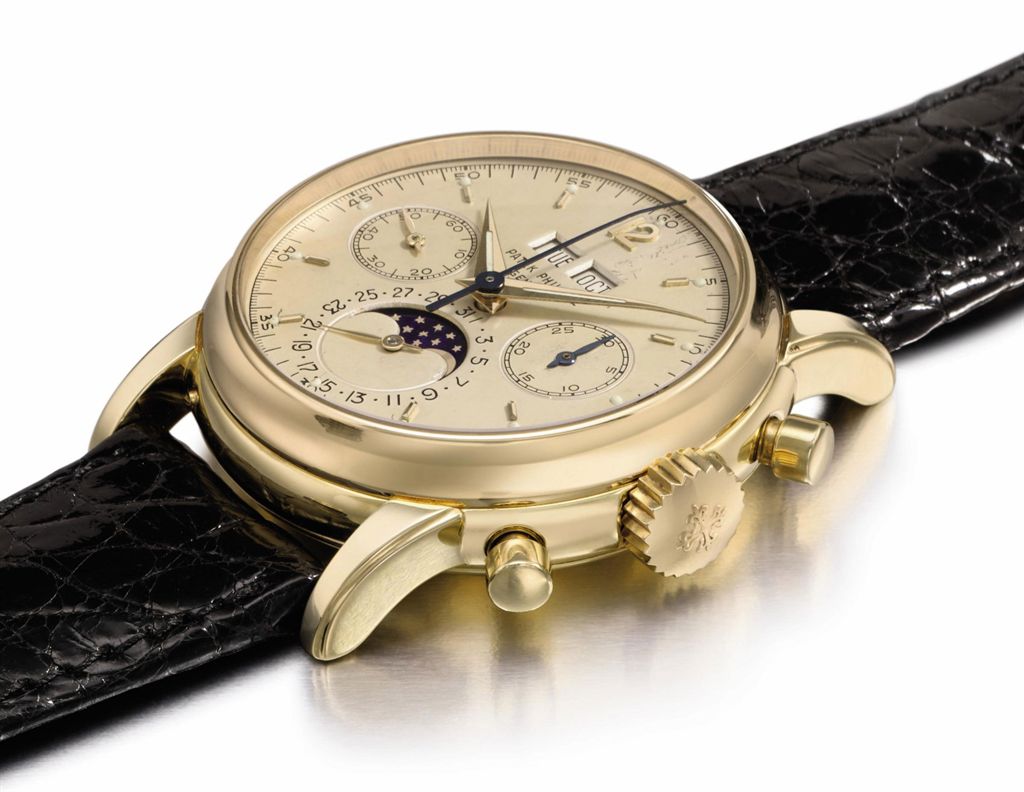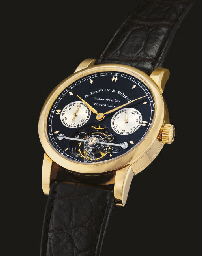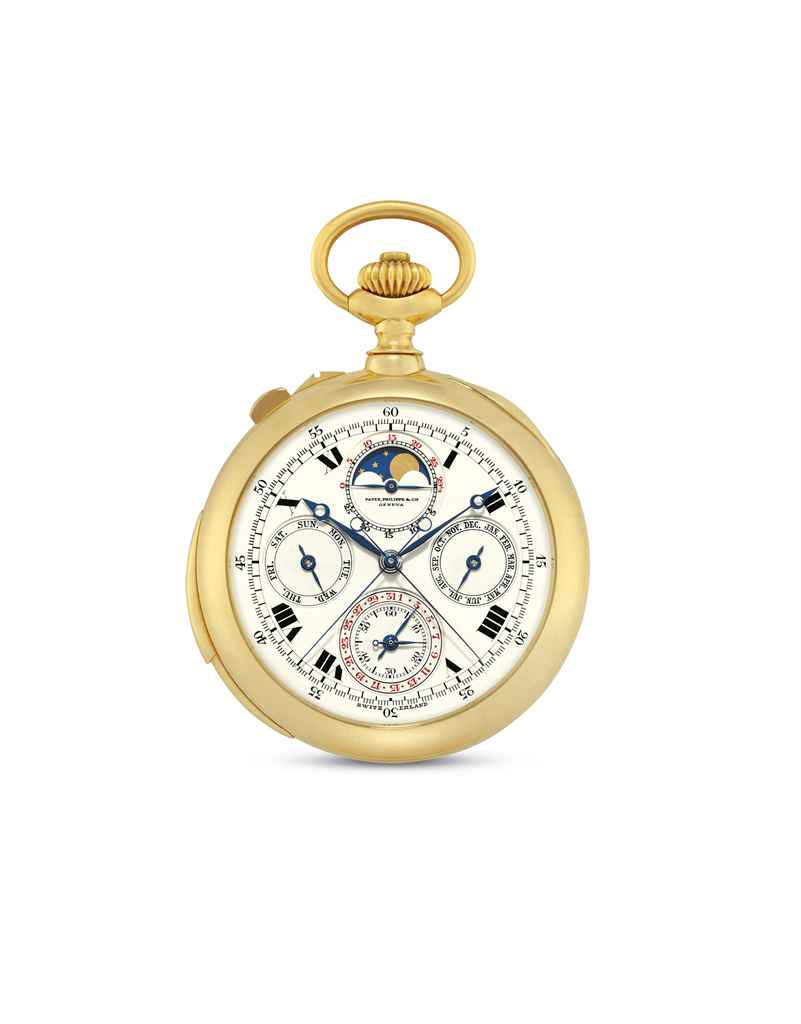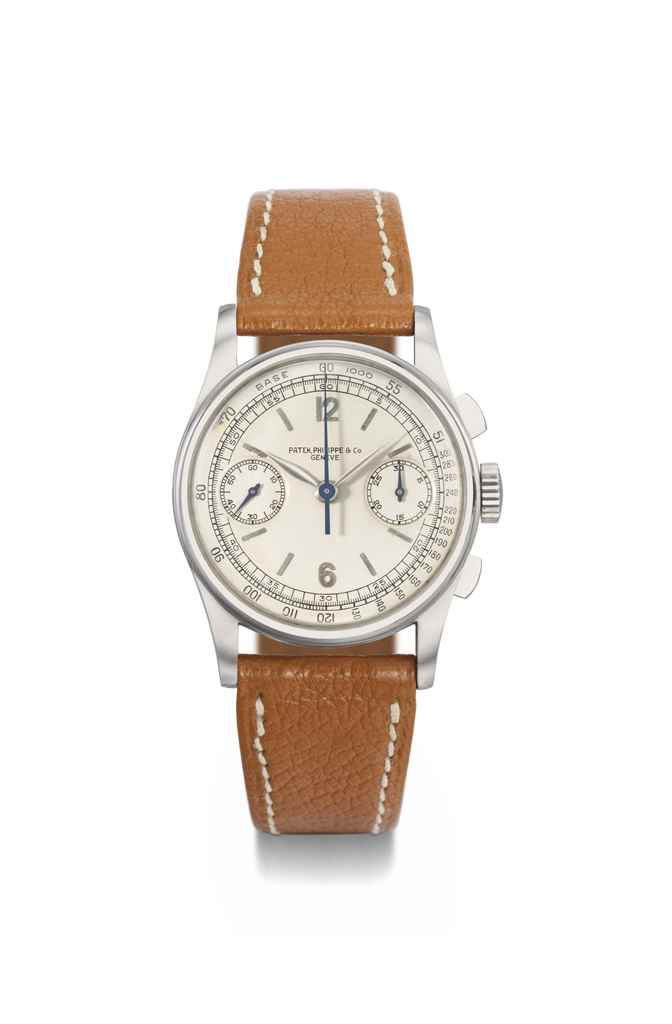A FINE AND RARE GERMAN RENAISSANCE GILT BRASS MOUNTED EBONISED CRUCEFIX CLOCK WITH ALARM Unsigned, Southern Germany, circa 1600 The horizontal gilt copper and brass rectangular plated movement with four squat Doric column turned corner posts enclosing fusee going train with brass flanged-capped barrel and steel greatwheel driving a three-wheel train with verge escapement regulated by steel balance slung beneath the baseplate, the strike train with standing barrel incorporating fine scroll-pierced walls and steel greatwheel, decorative sculpted steel and brass scrollwork to the release detents, and external countwheel set on the baseplate for sounding the hours on a bell mounted in the base of case, the alarm with small brass-walled barrel and steel contrate wheel for the verge operated hammer sounding on a bell set within in a second tier to the movement above, with conforming corner posts and also containing the motionwork for the extended hour cannon and alarm setting/release work arbor, the case surmounted with gadroon-engraved rotating orb incorporating Arabic hour annular chapters and with down-curved adjustable alarm setting hand to the top of the sphere, over brass crucifix applied with fixed hour hand and mounted with fire-gilt Corpus Christi over small mount cast as the Virgin Mary set onto a cavetto moulded upstand and flanked by cast gilt figures of St. Peter and St. Mary Magdalene, the plinth-form base with tablet panel applied with a winged cherub mask gilt mount to frieze over glazed movement aperture flanked by architectural pilasters adorned with foliate ribbon mounts to front, the sides with projecting scrolls surmounted with finials cast as urns containing fruiting foliage over further leafy mounts and flanked by male mask terms, the rear matching the front except for not having gilt mounts, on cavetto moulded base with pierced brass hinged panel fitted with the hour bell to underside and compressed bun feet. 50cm (19.75ins) high, 23.5cm (9.25ins) wide, 15cm (6ins) deep. Provenance: Previously sold at Bonhams, London Fine Clocks 6th July 2016 (lot 22) for £15,000. When considering the potential date of the current lot a cursory survey of dated German Renaissance table clock movements made during the second half of the 16th century reveals that the use of brass within the mechanism became more widespread as the century progressed. Initially brass was employed just for the fusees and spring barrel walls, then also for the movement pivot plates, and finally (by around 1600-20) for the wheelwork as well. With this in mind the current movement (having a mixture of brass and steel wheels in the trains) can be dated to around 1600. The wooden case of the present clock also a little unusual as most clocks of this type appear to have been made with engraved gilt metal cases. However, when considering other clocks with related wooden cases, it would appear that the use of ebony in case work was first adopted in around 1580-90 (see Brusa Guiseppe L'ARTE DELL' OROLOGERIA IN EUROPA plates 163-66 for an early ebony-case clock by Jobst Burgi dated to around 1580-85). This would appear to coincide with the introduction of the Baroque style into classical architecture which first evolved in the northern half of Italy but was quickly adopted by Southern German architects and persisted as a dominant style well into the 18th century. From this it is probably appropriate to speculate that wooden case-making emerged at around this time as the material both leant itself to the heavier more robust visual qualities of the Baroque style as well as the contrast between black and gold adding a heightened sense of drama to the visual qualities of the object. When considering dating evidence the case of the current lot shares very strong stylistic similarities to table clock housing a movement and dial dated 1617 by Johann Sayller of Ulm illustrated in Maurice, Klaus and Mayr, Otto THE CLOCKWORK UNIVERSE, GERMAN CLOCKS AND AUTOMOTA 1550-1
A FINE AND RARE GERMAN RENAISSANCE GILT BRASS MOUNTED EBONISED CRUCEFIX CLOCK WITH ALARM Unsigned, Southern Germany, circa 1600 The horizontal gilt copper and brass rectangular plated movement with four squat Doric column turned corner posts enclosing fusee going train with brass flanged-capped barrel and steel greatwheel driving a three-wheel train with verge escapement regulated by steel balance slung beneath the baseplate, the strike train with standing barrel incorporating fine scroll-pierced walls and steel greatwheel, decorative sculpted steel and brass scrollwork to the release detents, and external countwheel set on the baseplate for sounding the hours on a bell mounted in the base of case, the alarm with small brass-walled barrel and steel contrate wheel for the verge operated hammer sounding on a bell set within in a second tier to the movement above, with conforming corner posts and also containing the motionwork for the extended hour cannon and alarm setting/release work arbor, the case surmounted with gadroon-engraved rotating orb incorporating Arabic hour annular chapters and with down-curved adjustable alarm setting hand to the top of the sphere, over brass crucifix applied with fixed hour hand and mounted with fire-gilt Corpus Christi over small mount cast as the Virgin Mary set onto a cavetto moulded upstand and flanked by cast gilt figures of St. Peter and St. Mary Magdalene, the plinth-form base with tablet panel applied with a winged cherub mask gilt mount to frieze over glazed movement aperture flanked by architectural pilasters adorned with foliate ribbon mounts to front, the sides with projecting scrolls surmounted with finials cast as urns containing fruiting foliage over further leafy mounts and flanked by male mask terms, the rear matching the front except for not having gilt mounts, on cavetto moulded base with pierced brass hinged panel fitted with the hour bell to underside and compressed bun feet. 50cm (19.75ins) high, 23.5cm (9.25ins) wide, 15cm (6ins) deep. Provenance: Previously sold at Bonhams, London Fine Clocks 6th July 2016 (lot 22) for £15,000. When considering the potential date of the current lot a cursory survey of dated German Renaissance table clock movements made during the second half of the 16th century reveals that the use of brass within the mechanism became more widespread as the century progressed. Initially brass was employed just for the fusees and spring barrel walls, then also for the movement pivot plates, and finally (by around 1600-20) for the wheelwork as well. With this in mind the current movement (having a mixture of brass and steel wheels in the trains) can be dated to around 1600. The wooden case of the present clock also a little unusual as most clocks of this type appear to have been made with engraved gilt metal cases. However, when considering other clocks with related wooden cases, it would appear that the use of ebony in case work was first adopted in around 1580-90 (see Brusa Guiseppe L'ARTE DELL' OROLOGERIA IN EUROPA plates 163-66 for an early ebony-case clock by Jobst Burgi dated to around 1580-85). This would appear to coincide with the introduction of the Baroque style into classical architecture which first evolved in the northern half of Italy but was quickly adopted by Southern German architects and persisted as a dominant style well into the 18th century. From this it is probably appropriate to speculate that wooden case-making emerged at around this time as the material both leant itself to the heavier more robust visual qualities of the Baroque style as well as the contrast between black and gold adding a heightened sense of drama to the visual qualities of the object. When considering dating evidence the case of the current lot shares very strong stylistic similarities to table clock housing a movement and dial dated 1617 by Johann Sayller of Ulm illustrated in Maurice, Klaus and Mayr, Otto THE CLOCKWORK UNIVERSE, GERMAN CLOCKS AND AUTOMOTA 1550-1















Try LotSearch and its premium features for 7 days - without any costs!
Be notified automatically about new items in upcoming auctions.
Create an alert